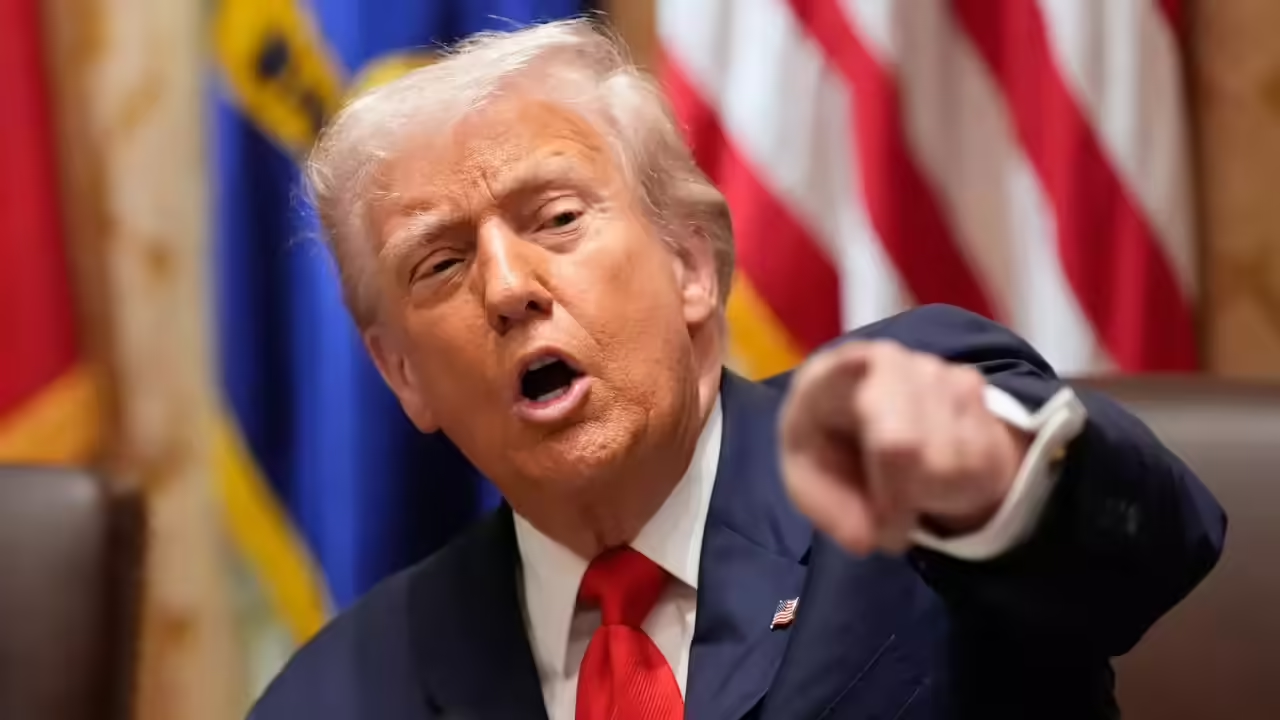Copyright breezyscroll

Growing questions over Trump’s health transparency U.S. President Donald Trump is once again under scrutiny over his health disclosures following his recent revelation that he underwent an MRI scan and cognitive test. The remarks, made last month, have reignited debate about how much medical information a sitting president should be obligated to share with the public. Trump, 79, told reporters aboard Air Force One that he “got an MRI; it was perfect,” without specifying what part of his body was scanned. His brief statement followed a note from his physician, Dr. Sean Barbabella, who described the president as being in “excellent overall health.” However, the lack of detail—and the timing of his visits to Walter Reed Military Medical Center—has prompted questions from former White House doctors and presidential health experts about what exactly the test was for and why certain information remains undisclosed. The controversy: From bruised hand photos to MRI speculation The debate intensified after photos surfaced online showing Trump with a bruised right hand covered in makeup and swollen legs. Critics claimed the images hinted at underlying health problems, while the White House attributed the bruising to “excessive handshaking” and confirmed that Trump suffers from chronic venous insufficiency, a condition that affects blood flow in the legs. Despite reassurances, the images fueled speculation, especially as the president made his second trip to Walter Reed in six months for what officials described as a “routine follow-up.” These developments have renewed public attention to Trump’s health transparency, a recurring issue during his presidency and previous campaign cycles. Former White House doctor flags “disconnect” in Trump’s treatment timeline Dr. Jeffrey Kuhlman, a former White House physician who served under three presidents, told The Hill that he was not surprised that an elderly president required follow-up testing. However, he questioned the timeline of Trump’s MRI visit, describing an apparent inconsistency in the details released by the White House. Kuhlman noted that most procedures—including preventive health screenings—could have been performed inside the White House Medical Unit within minutes. The short flight from the South Lawn to Walter Reed, he explained, takes only about eight minutes. “So we know that he at least had four hours available to undergo medical care,” Kuhlman said, adding, “There’s a disconnect there.” He emphasized that while it’s routine for presidents to visit Walter Reed for advanced imaging, the administration’s lack of clarity about what prompted the MRI raises avoidable confusion and suspicion. Experts call for greater presidential health transparency While there is no legal requirement for presidents to disclose personal health information, medical historians argue that selective transparency undermines public trust—particularly when a president’s capacity to serve could be in question. Dr. Jacob Appel, a presidential health historian and professor of psychiatry at the Icahn School of Medicine at Mount Sinai, told The Hill that the public interest is “not served by partial disclosure or filtered statements.” “If you’re going to say that you’re having an MRI, we should know what the MRI is for,” Appel said. He noted that without details, speculation can run rampant. “We don’t know what the MRI was for. It could be something cognitive. It could be a cardiac issue. It could be that he twisted an ankle and they’re ruling out a fracture. It could be almost anything.” The broader issue: secrecy, precedent, and public trust Presidential health secrecy is not new. Historical precedents show that several presidents—including Franklin D. Roosevelt and John F. Kennedy—withheld serious medical conditions from the public. While supporters argue that a president deserves the same level of privacy as any citizen, critics stress that transparency is essential to maintaining confidence in leadership, particularly during global crises or during reelection campaigns. With Trump already the oldest U.S. president in history, even minor medical updates can quickly become a politically charged issue. The controversy underscores the tension between personal privacy and public accountability that has long defined presidential medicine. What comes next? As of now, the White House has not released further details about the MRI results, the specific body part scanned, or any additional tests performed.If Trump’s medical team intends to reassure the public, experts say a clearer timeline and medical summary could help defuse speculation. Until then, the lingering “disconnect” highlighted by Kuhlman and Appel will likely continue to drive questions about the president’s health and his administration’s approach to transparency. President Donald Trump revealed he had an MRI and cognitive test but offered no details. Images showing swollen legs and a bruised hand reignited health concerns. Former White House doctor Jeffrey Kuhlman questioned the timeline of Trump’s Walter Reed visit. Medical historian Jacob Appel urged transparency, saying the public “should know what the MRI is for.” Experts highlight the enduring conflict between presidential privacy and public right to know.



